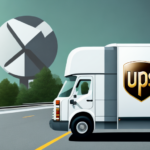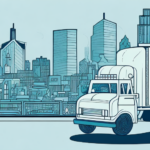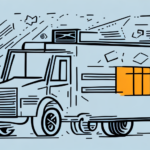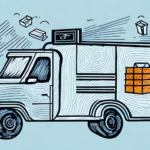Optimizing Last Mile Delivery with Technology Integration
Last mile delivery is the final stage in the supply chain where goods are delivered to the end consumer. It is considered the most crucial and complex stage due to various challenges that occur during this process. These challenges include traffic congestion, delivery delays, inaccurate address information, and restricted access to certain areas. However, with the incorporation of technology, last mile delivery can be optimized to ensure customers receive their products on time and with minimal delays.
Understanding Last Mile Delivery
Last mile delivery involves the movement of goods from a transportation hub to the final destination, typically a residence or business location. It is the final stage of the supply chain and often the most critical since it directly affects the customer experience. The primary goal of last mile delivery is to ensure that the customer receives their order in a timely and efficient manner.
One of the biggest challenges of last mile delivery is the unpredictability of traffic and weather conditions, which can cause delays and impact delivery times. To address this issue, many companies are exploring the use of drones and autonomous vehicles for last mile delivery, which can navigate through traffic and adverse weather conditions more efficiently.
Additionally, real-time tracking and communication between the delivery driver and the customer are essential. This allows customers to stay informed about the status of their delivery and make necessary arrangements to ensure a successful delivery. Many companies are investing in technology solutions such as mobile apps and SMS notifications to enable real-time tracking and communication.
Challenges in Last Mile Delivery
Last mile delivery presents numerous challenges, including navigating congested urban areas, finding accurate delivery addresses, and managing time-sensitive or delicate items. Delivery personnel may also encounter difficulties accessing gated communities, apartment buildings, and other restricted areas. These challenges can lead to delivery delays, customer complaints, and ultimately, lost revenue.
The unpredictable nature of the delivery environment, such as unexpected road closures, traffic accidents, or severe weather conditions, can disrupt delivery schedules and cause delays. This is particularly problematic for time-sensitive deliveries, such as medical supplies or perishable goods.
The rise of e-commerce has significantly increased the volume of last mile deliveries, putting additional pressure on delivery companies to meet customer expectations. Customers now expect faster delivery times, real-time tracking, and flexible delivery options, such as same-day or weekend delivery. Meeting these demands requires substantial investment in technology, infrastructure, and personnel, which can be challenging for smaller delivery companies.
The Importance of Optimizing Last Mile Delivery
Optimizing last mile delivery is critical for businesses that rely on efficient, timely delivery of products. Improving delivery times and reducing the frequency of delayed shipments can enhance customer satisfaction levels, retention rates, and profitability. Timely delivery also provides a competitive advantage over competitors and enhances the overall reputation of a business.
Utilizing technology such as route optimization software and real-time tracking systems is one way to optimize last mile delivery. These tools help businesses streamline their delivery processes, reduce delivery times, and improve overall efficiency. Additionally, implementing sustainable delivery practices, such as using electric vehicles or bicycles, can reduce carbon emissions and improve delivery times by avoiding traffic congestion in urban areas.
Role of Technology in Last Mile Delivery Optimization
Technology plays a vital role in optimizing last mile delivery by providing solutions that help overcome various challenges. Key technological solutions include:
- Route Optimization: Software that plans the most efficient delivery routes based on factors like distance, traffic, and delivery windows.
- Real-Time Tracking: Systems that offer live updates on delivery status, allowing customers and businesses to monitor deliveries in real-time.
- Automated Dispatch Systems: Tools that streamline the assignment of delivery orders and optimize the use of available resources.
- Electronic Proof of Delivery: Digital systems that confirm delivery completion, reducing paperwork and improving accuracy.
One of the key benefits of technology in last mile delivery optimization is increased efficiency. Route optimization software helps delivery drivers plan the most efficient routes, reducing travel time and fuel costs. This not only saves money for the delivery company but also reduces the carbon footprint of the delivery process.
Improved customer experience is another advantage of technology in last mile delivery. Real-time tracking allows customers to monitor their deliveries, providing accurate information about the status of their packages. This reduces customer anxiety and increases satisfaction with the delivery process.
Technological Solutions for Optimization
Several technological solutions are available to optimize last mile delivery, including:
- Real-Time Tracking: Provides live updates on traffic conditions, weather, and delivery status, enabling dispatchers to adjust routes in real-time.
- Route Optimization Software: Utilizes algorithms to determine the most efficient delivery routes, reducing fuel costs and improving delivery times.
- Drones and Autonomous Vehicles: Offer innovative methods for delivering small packages quickly and transporting larger items efficiently.
For example, companies like Amazon have implemented advanced delivery tracking systems that provide real-time updates on delivery status. Similarly, UPS has developed proprietary routing technology that optimizes delivery routes in real-time, improving delivery times and reducing fuel consumption.
Measuring the Success of Last Mile Delivery Optimization
The success of last mile delivery optimization can be measured through various metrics, including delivery times, customer satisfaction levels, and cost savings. Regularly analyzing these metrics helps businesses identify areas for improvement and make necessary adjustments to ensure efficient last mile delivery.
- Rate of Successful Deliveries: The percentage of deliveries completed without issues such as missed deliveries or damaged packages. Tracking this metric helps identify recurring problems and address them effectively.
- Customer Satisfaction: Metrics such as customer feedback and repeat purchase rates indicate the effectiveness of last mile delivery strategies.
- Environmental Impact: Metrics like fuel consumption and emissions help businesses identify opportunities to reduce their environmental footprint, such as using electric vehicles or optimizing delivery routes.
- Cost Savings: Reduction in fuel expenses, labor costs, and operational inefficiencies contribute to overall cost savings.
Future Trends in Last Mile Delivery Technology
The incorporation of technology in last mile delivery is a rapidly growing sector, with continued advancements expected to further revolutionize the process. Future trends include:
- Drones and Robotics: Continued development in drone technology and robotics will enhance the speed and efficiency of deliveries, especially in hard-to-reach areas.
- Autonomous Vehicles: Self-driving delivery trucks and vans will play a significant role in reducing labor costs and improving delivery times.
- Artificial Intelligence: AI will be used to predict delivery patterns, optimize routes, and enhance decision-making processes in real-time.
- Internet of Things (IoT): IoT devices will provide more precise tracking and monitoring of deliveries, improving transparency and accountability.
These advancements promise increased efficiency, cost savings, and enhanced customer experiences in the future of last mile delivery.
Best Practices for Implementing Technology in Last Mile Delivery
Implementing last mile delivery technology requires careful planning and execution. Businesses should follow these best practices:
- Conduct a Thorough Analysis: Assess the current delivery process to identify areas for improvement and determine which technologies will address specific challenges.
- Choose the Right Technology Solutions: Select technology solutions that align with the business’s specific needs and goals.
- Phase Implementation: Roll out technology solutions in stages to minimize disruption to existing delivery processes.
- Provide Comprehensive Training: Ensure that delivery and support personnel are adequately trained to use new technologies effectively.
- Monitor and Evaluate: Continuously monitor the performance of implemented technologies and make adjustments as needed.
Addressing Security Concerns with Technology Adoption
While technology solutions can improve last mile efficiency and customer experience, they also introduce potential security risks, such as data breaches and cyber attacks. To mitigate these risks, businesses should implement appropriate security measures, including:
- Strong Passwords: Enforce the use of strong, unique passwords for all systems and applications.
- Data Encryption: Encrypt sensitive data both in transit and at rest to protect it from unauthorized access.
- Secure Communication Protocols: Use secure protocols for all communication channels to prevent interception and tampering.
- Regular Security Audits: Conduct regular security audits to identify and address vulnerabilities in the system.
- Employee Training: Educate employees about cybersecurity best practices to prevent accidental data breaches.
Conclusion
The incorporation of technology in last mile delivery is critical for businesses aiming to optimize delivery efficiency and enhance customer experience. By leveraging various technological solutions, businesses can overcome challenges inherent in the last mile delivery process, streamline delivery routes, and reduce delivery times. The continued advancement of technology is expected to further revolutionize last mile delivery, providing more efficient and cost-effective solutions for businesses and their customers alike.






















